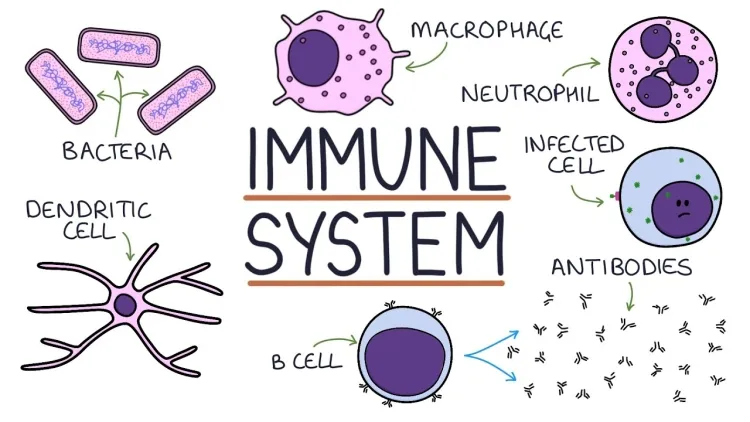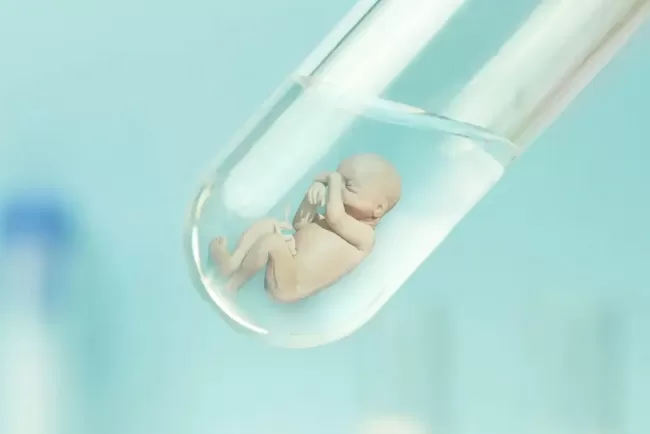Human Immune System: Guardians Against Harmful Invaders...!!!
The immune system is a marvel of biological engineering, capable of distinguishing between self and non-self and mounting targeted responses to a vast array of pathogens. Its ability to remember past infections provides lasting immunity and forms the basis for effective vaccination strategies.

The human immune system is an intricate network of cells, tissues, and organs that collaborate to protect the body against harmful invaders like bacteria, viruses, fungi, and parasites. It is composed of two main components: the innate immune system and the adaptive immune system.
Innate Immune System The innate immune system serves as the body's first line of defense, providing a rapid response to potential threats. It includes physical and chemical barriers, as well as immune cells that are always prepared to counteract invaders.
-
Physical and Chemical Barriers: The skin and mucous membranes function as physical barriers, preventing pathogens from penetrating the body. Additionally, secretions such as saliva, mucus, and tears contain enzymes and antimicrobial proteins that neutralize invaders.
-
Phagocytes: Phagocytes are specialized immune cells that engulf and digest pathogens. Neutrophils and macrophages are the main types of phagocytes. Neutrophils are the most abundant white blood cells and are the first responders to infection sites. Macrophages are larger cells that reside in tissues and organs, where they engulf pathogens and dead cells.
-
Natural Killer Cells: These cells patrol the body, identifying and destroying infected or cancerous cells by inducing apoptosis (programmed cell death).
-
Inflammation: When tissues are injured or infected, the body triggers an inflammatory response. This involves the release of signaling molecules called cytokines, which attract immune cells to the infection site. Inflammation helps contain and eliminate the pathogen, although excessive inflammation can cause tissue damage.
Adaptive Immune System The adaptive immune system provides a specific and targeted response to pathogens. It has a memory component that enables the body to recognize and respond more efficiently to previously encountered invaders. The main players in the adaptive immune system are lymphocytes, which include B cells and T cells.

-
B Cells and Antibodies: B cells are responsible for producing antibodies, which are proteins that specifically bind to antigens (foreign molecules) on pathogens. Once an antibody binds to an antigen, it can neutralize the pathogen or mark it for destruction by other immune cells. B cells can also differentiate into memory B cells, which remain in the body and provide long-lasting immunity.
-
T Cells: There are two main types of T cells: helper T cells and cytotoxic T cells. Helper T cells secrete cytokines that enhance the immune response by activating other immune cells. Cytotoxic T cells directly kill infected or cancerous cells by inducing apoptosis. Like B cells, T cells can also form memory T cells, providing long-lasting protection.
-
Antigen Presentation: For T cells to recognize and respond to pathogens, antigens must be presented on the surface of specialized cells called antigen-presenting cells (APCs). Dendritic cells, macrophages, and B cells can act as APCs. They capture and process antigens, displaying them on their surface for recognition by T cells.
-
Clonal Selection: When a B or T cell encounters its specific antigen, it undergoes clonal selection. This process involves the rapid proliferation of the activated lymphocyte, creating a large population of cells that can target the specific pathogen, ensuring a robust and targeted immune response.
Immune Memory and Vaccination One of the most remarkable features of the adaptive immune system is its ability to remember past infections. This immunological memory forms the basis for vaccination. Vaccines contain weakened or inactivated forms of pathogens or their components, stimulating the immune system to produce memory B and T cells without causing disease. If the vaccinated individual later encounters the actual pathogen, their immune system can mount a swift and effective response.
Autoimmunity and Immunodeficiency While the immune system is generally highly effective, it can sometimes malfunction. Autoimmune diseases occur when the immune system mistakenly attacks the body's own tissues, with examples including rheumatoid arthritis, lupus, and multiple sclerosis. Immunodeficiency disorders result from a weakened or absent immune response. Primary immunodeficiency disorders are genetic, while secondary immunodeficiency can be caused by factors like infections (e.g., HIV/AIDS), malnutrition, or certain medications.
The immune system is a marvel of biological engineering, capable of distinguishing between self and non-self and mounting targeted responses to a vast array of pathogens. Its ability to remember past infections provides lasting immunity and forms the basis for effective vaccination strategies. However, when it malfunctions, the consequences can be severe, highlighting the importance of maintaining immune health. As our understanding of the immune system continues to grow, so too does our capacity to develop innovative treatments for immune-related diseases and improve overall health outcomes.
What's Your Reaction?

















